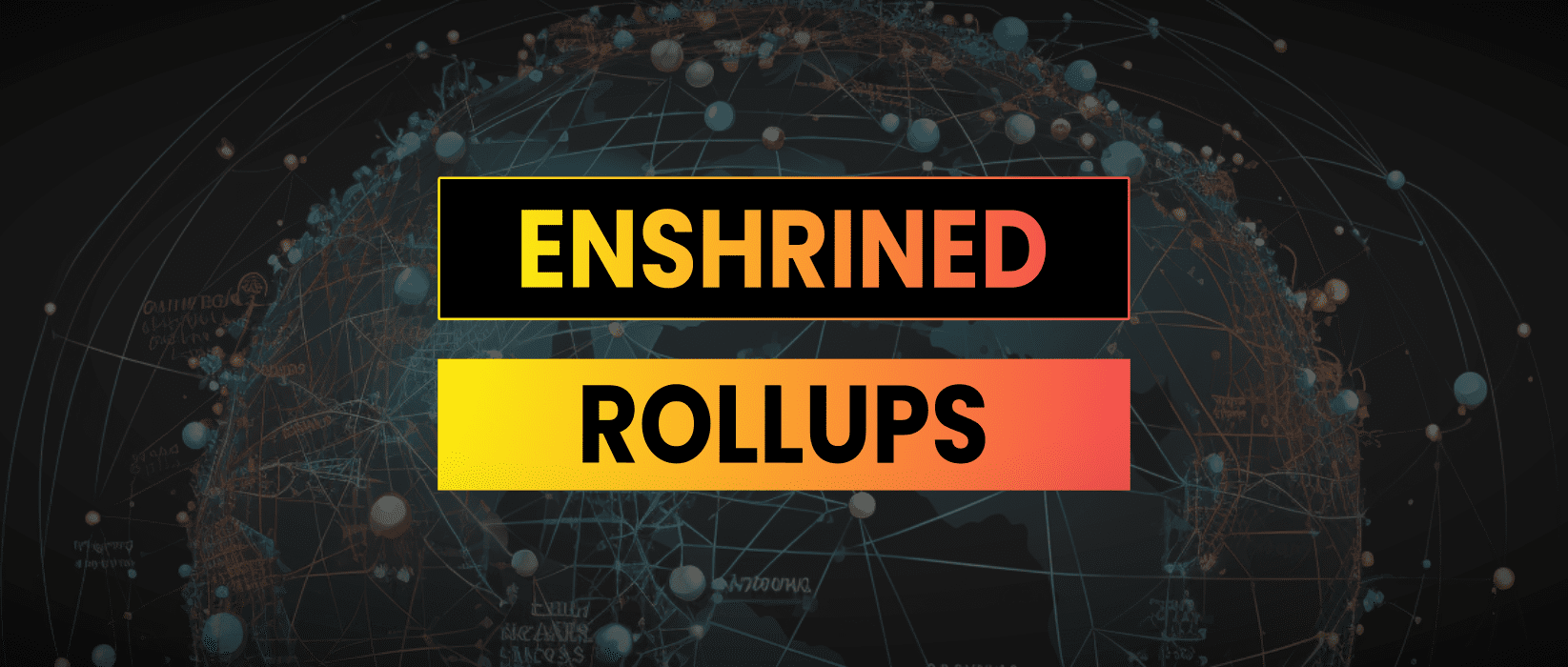I believe that in the future 90%+ of transactional volume will go through enshrined rollups. So let’s take a in-depth look at what this technology is and how it is going to help Ethereum scale to a billion users.
- What Is An Enshrined Rollup?
- Advantages Of Enshrined Rollups
- When Will Enshrined Rollups Be Introduced?
What Is An Enshrined Rollup?
Enshrined rollups are a scaling solution being proposed by core developers at Ethereum. A layer 2 rollup is a separate chain which is integrated with the layer 1 mainnet via smart contracts which store funds and publish proofs that the state is valid.
An enshrined rollup will run an EVM (Ethereum Virtual Machine) across a decentralized network of validators. It will perform it’s own computations and stores it’s own persistent state data. The rollup will generate a proof of computational correctness which will be checked and verified by the L1 mainnet.
Enshrined rollups are integrated with the consensus mechanism of the L1 blockchain. They are like internal “official rollups” which could have improved communications between each other and the parent L1 chain.
Imagine a network of 100 enshrined rollups all doing separate computation and storing data at scale. Smart contracts posted on any L2 could potentially communicate and transfer assets to any other enshrined rollup and perhaps even have communication channels with the Ethereum mainnet.
Enshrined rollups will likely use zkEVM technology and their development is still at an early stage, much of the discussions around their design is still subject to debate.

Advantages Of Enshrined Rollups
Enshrined rollups take the advantages of rollups and reinforce them by integrating closely with the Layer 1 blockchain.
Enshrined rollups provide a scalability solution by performing the majority of computational work off-chain while only relaying the results (and the proofs of their validity) to the L1 blockchain. This allows the L1 blockchain to process more transactions per second, as it only needs to verify proofs rather than executing the computations itself.
Ethereum mainnet will eventually become a “chain of proofs and legacy transactions” and users will interact with Ethereum via an RPC node which connects to an enshrined rollup.
One of the defining features of enshrined rollups is that they inherit the security properties of the parent blockchain. Since the proofs provided by validators in enshrined rollups need to be corroborated by the L1 blockchain, it adds a layer of security and trust in the operations performed in the rollup.
Enshrined rollups contribute positively towards the maintenance of decentralization within the system. Because the L1 blockchain is not required to directly process transactions, the need for every node in the network to process every transaction is eliminated. This reduction in resource requirements for running a node makes it possible for a broader participation in the network, which enhances the decentralization and security of the system.
Enshrined rollups can foster interoperability within the blockchain ecosystem. Since these rollups can be designed to be compatible with existing Layer 1 blockchains, they can facilitate more efficient and effective interactions with other systems and applications built on the same blockchain. Furthermore, the embedding of the rollup’s logic in the Layer 1 protocol allows tooling and light clients for an enshrined rollup to work directly out of the box.
It is also crucial to note that enshrined rollups come with certain drawbacks, such as added complexity and the security risk of adding another application layer which could contain bugs in the ZK circuits.
When Will Enshrined Rollups Be Introduced?
Currently Ethereum is supporting, to some extent, private commercial L2 rollups such as Optimism and Arbitrum. These are optimistic rollups and zkEVM rollups are still being developed.
I believe that the Ethereum foundation will wait until the work being done by their privacy and scaling explorations team on zkEVM circuits: https://github.com/privacy-scaling-explorations/zkevm-circuits
This is the code base that all the other zero knowledge rollups are building on top of. Once it is complete there will be a “training wheels” period where centralization is introduced as a safety feature while the code is tested in production.
At some undefined point after this the Ethereum core devs will shift their focus to developing a spec for a network of enshrined rollups. However I expect all the following updates will be rolled out before focus turns to enshrined rollups:
- ⛓️ Danksharding Enhances L2 rollup affordability by adding data ‘blobs’ to Ethereum blocks, expected Q4 2023
- ⚡ Single Slot Finality Allows blocks to be proposed and finalized quickly, improving convenience and security.
- 🔄 Proposer-Builder Separation Facilitates a fairer, more efficient consensus mechanism by dividing tasks among different validators.
- 🕵️ Secret Leader Election Employs cryptography to conceal the identity of the block proposer, mitigating potential attacks.
- 💾 Verkle Trees These data structures help enable tiny storage requirement stateless Ethereum clients.
- 📦 Statelessness New blocks can be verified by clients without large data storage, offering cost-efficient node-operation benefits.
My best guess for when enshrined rollups could be rolled out would be 3-5 years so somewhere between 2026-2028.


